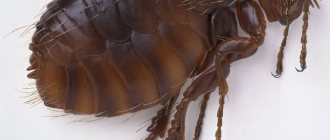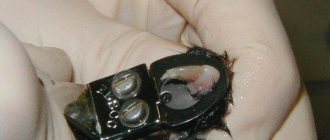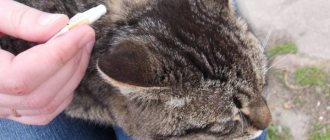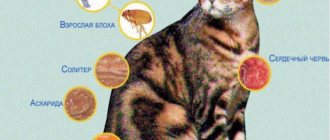The list of household and garden plants dangerous to animals is very long. Some of them are toxic, others are poisonous, and some are even deadly. And among this large list, the lily stands out separately.
Lilies of the species Lilium (true lily) and Hemerocallis (daylily) cause kidney failure in cats. Cats are the only animal species in which lilies cause kidney damage. The first report of such effects was made in 1992. Research and clinical data have shown that these plants do not cause nephrotoxicity in dogs, rats or rabbits.
Most cases of cat poisoning occur in the home due to flowers in bouquets.
Nephrotoxicity of lily for cats
There are many different types of plants called "lilies": Easter lily, lily lily, Asiatic lily, tiger lily, peace lily, calla lily and lily of the valley, among others.
And while they may be beautiful to look at, a cat can die from kidney failure if it eats any part of these toxic species and does not receive immediate treatment.
In fact, just two leaves can make your cat sick and, if left untreated, can become fatal in just three days.
Diagnostics
You should not make diagnoses yourself, as the likelihood of error is quite high.
Even if the owner saw that his pet was gnawing on lilies, the diagnosis still needs to be entrusted to a specialist. Therefore, it is recommended that at the first signs of poisoning, take your pet to a veterinary clinic so that specialists can conduct a series of tests based on which they can give him the correct diagnosis.
What kind of research, besides a general examination of the animal, may be needed if a cat is suspected of being poisoned by lily toxins?
- General blood analysis.
- General urine analysis.
- Biochemistry of blood.
- Ultrasound of internal organs.
Important!
Before making a correct diagnosis, you should under no circumstances begin to treat your pet on your own. In the same case, if a trip to the clinic is temporarily impossible for one reason or another, it is permissible to provide first aid to the cat without resorting to the use of medications other than sorbents, such as activated carbon.
The main reason
When determining the toxicity of a lily you want or have, always look at the plant's scientific name. The scientific name consists of two parts: the “name” with a capital letter is the genus; “second name” is a species, it is not capitalized.
You may see additional names after the first and second; these are subdivisions of the species and are not important for determining toxicity. The second name is sometimes abbreviated sp. or species This means that the actual species has not been identified.
Sometimes the name is shortened, usually using only the first letter of the name. This is usually done when there is a list of several species of the same genus.
Of greatest concern are lilies in the genus Lilium (Lilium sp.), which includes Easter lilies, tiger lilies, and Asiatic lilies, as well as any of the genus Hemerocallis (Hemerocallis sp.), including lily lilies.
Recovery
When first aid has been provided to the cat and his condition has stabilized and does not cause concern, he is allowed to be taken home. With severe consequences of intoxication, animals remain in the inpatient department longer. Before discharge, the doctor talks with the owners about care, feeding and treatment at home. Prescribes medications for home treatment. For at least 3 months after poisoning, cats are prescribed a dietary diet, so they are fed food intended for sensitive digestion. It is recommended to visit a veterinarian regularly to monitor the animal's condition.
Treatment of cat poisoning with lilies
If your cat has only recently ingested plant material and has not yet vomited, your veterinarian will try to induce vomiting.
Activated charcoal will be administered orally to absorb any toxin that may remain in the intestines. The key to survival is to give plenty of intravenous (IV) fluids to try to prevent dehydration and kidney shutdown.
Fluids will be given for 1-2 days while monitoring your cat's kidney health as well as urine output. Lack of urine is a sign that treatment has failed.
Symptoms of poisoning
Cats by nature are both suspicious and curious. It is unknown why they are attracted to flowers and what prompts them to taste the petals, apparently they love to try everything. In order for toxins to enter the cat's body, it is necessary to eat the source of the poison - lily petals. They can cause a strong nephrotoxic effect in an animal if it enters the gastrointestinal tract.
Organ damage can also be caused by pollen particles in the stamens of a flower and the smell of lilies.
Symptomatic signs of intoxication if a cat has eaten a lily:
- foaming from the mouth;
- nausea and vomiting;
- depression;
- refusal of food;
- increased salivation;
- frequent urination;
- dehydration with increased desire to drink;
- lack of coordination;
- frequent seizures.
What herbs do cats like most?
List of useful plants (except for cases of individual intolerance):
- Catnip (catnip). Probably the most favorite plant for cats. It has a calming effect on them, although in the first 10 minutes after eating, pets may show increased activity. Catnip phytohormones act on them as happiness hormones and pheromones. But not all cats react violently to this mint, although in any case it will only bring benefits.
- Thyme (thyme). It has a calming effect, like catnip. But if you decide to grow thyme, it is better to plant several bushes at once, because it takes a very long time to grow.
- Valerian. This herb is known for helping people calm down and get a good night's sleep. But for cats it works as a stimulant - it makes even fat and lazy cats hyperactive. Cats will definitely dig up the roots of valerian if it grows in your garden.
- Lavender. It has a sedative effect not only on us, but also on cats. Safe for animals.
- Chamomile. As a tincture or decoction, when applied to the skin, it soothes itching. May also reduce inflammation.
- Wheat, oats and barley. They contain a large amount of vitamins and microelements (potassium, magnesium, phosphorus), as well as folic acid. With the help of these herbs, the stomach is well cleansed from lumps of swallowed hair. If your cat does not have the opportunity to eat grass in its natural environment, for example in winter, you can grow it on the windowsill in a few days. Pet stores always have suitable sets of seeds in their assortment.
- Peppermint and lemon balm. Cats love almost all types of mint and lemon balm, but they should not get too carried away with eating these plants. Everything is good in moderation, but overeating may cause stomach upset.
- Parsley. Rich in potassium and vitamins, in particular A, B and C. If your pet willingly eats it, do not deny him the pleasure.
- Carrot tops. Cats love soft and juicy greens, especially if their diet lacks essential vitamins.
- Marigold. Not only are they safe for cats, but they are also natural repellents, repelling harmful insects with their scent. Due to their lutein content, their extract is found in many medicated foods, such as Royal Canin Veterinary Diets.
- Budra ivy (dog mint). For cats, this is also a source of phytohormones. It acts similarly to catnip and valerian.
- Evening primrose. It is a source of healthy unsaturated fatty acids.
Cats vomit a little after eating non-poisonous plants, so they can cleanse their stomachs with the help of grass, there is no need to be afraid of this.
“Tailtails” specifically eat tough grass to remove fur from the gastrointestinal tract by regurgitation. Of course, they have no idea that they are doing this precisely because of the accumulated hairballs. In fact, they first start to feel sick, and then they think about what kind of hard food they can eat to induce vomiting.
Vomiting works as a protective mechanism to remove a foreign object located in the gastrointestinal tract.
And this happens not only because of hairballs, but also because of eating any food or objects that cause discomfort, as well as against the background of any disease. And as a hard object, essentially working like a brush for cleaning, the cat can choose not only grass, but anything: wires, threads, Christmas tree tinsel, and any other small inedible objects. Therefore, it is recommended to grow healthy cat grass (such as wheat, oats or barley) so that your furbaby always has access to it.
Unfortunately, there are many more dangerous plants. Of course, not all pets show interest in them. As a rule, street cats are more selective and do not eat everything. But if your pet rarely goes outside, when going out into nature, he can try literally anything.
Signs of intoxication
If a cat eats even a small piece of the plant, it will experience the following symptoms:
- Lethargy.
- Loss of appetite.
- Attacks of vomiting.
- Tremor.
- Dehydration.
- Convulsive seizures.
Early signs of poisoning may appear within two hours after eating the flower.
If the cat has lost its appetite, looks lethargic, or is vomiting, the owners need to see if the lilies are damaged. Soon after the first signs appear, the animal experiences seizures and tremors. If a cat has eaten a large amount of the plant, its kidneys will suffer greatly as a result of dehydration. This can be fatal. Lily of the valley does not affect the kidneys, but the heart. This poses no less a threat to your pet. If the owner suspects that the cat has been poisoned by a lily, he needs to take the animal to the veterinarian as quickly as possible. It is better to determine in advance how much and what type of plant the cat consumed. Then it will be easier for the specialist to choose effective treatment.
Rehabilitation process
After providing pediatric assistance and carrying out the necessary procedures, owners are usually allowed to take the poisoned pet home.
The only exceptions to this rule are extremely severe cases of intoxication, when the animal must constantly be under IV drips or dialysis. Then he will be kept in a hospital until his general condition stabilizes.
In any case, after bringing the sufferer home, cat owners need to follow all the doctor’s recommendations, including how, what and how many times a day to feed, what medications to give, and how often to go to the clinic to monitor the pet’s condition.
Important!
In the event that IVs were prescribed, but the cat was not left in the hospital, the owners will have to take him to the clinic for procedures at the appointed time. Violation of this regime is completely unacceptable, since at the slightest deviation from following the doctor’s recommendations, the cat may develop severe complications caused by damage to the kidney tissue.
Lily poisoning is considered very dangerous for cats, but the likelihood of developing serious complications depends to a large extent on the individual characteristics of the animal. Some cats are more susceptible to lily toxins, others less so. Some of the purrs recover after minimal therapy and do not experience any consequences of poisoning in the future.
Others need weeks of dialysis to allow their kidney tissue to begin to recover. However, in many pets, unfortunately, the kidneys do not begin to function normally despite all the measures taken and they die within a few days after their fateful “acquaintance” with flowers.
Conclusion
To prevent a cat from being poisoned by lilies, you must follow simple rules: do not place bouquets of these flowers in the room where the animal is, and outside the city or in a private house, do not allow your pet to approach the flowers, smell them, or, when lilies are in bloom, Moreover, chew them.
If an accident happens and the cat does eat lilies, then it is necessary to take him to the clinic as soon as possible or immediately begin providing first aid to the pet if for some reason a trip to the doctor is impossible.
Care
The sooner you bring your cat in for treatment, the better her chance of survival. In the early stages, your veterinarian may perform a procedure known as decontamination. Your cat will be given a thick oral liquid that binds toxins and removes them from the body through the gastrointestinal tract. Aggressive fluid resuscitation started within 24 hours of ingestion may prevent anuric renal failure, where the kidneys fail to produce urine. 3 In more severe cases, dialysis is the only effective treatment. Be prepared for your cat to be hospitalized for several days.











